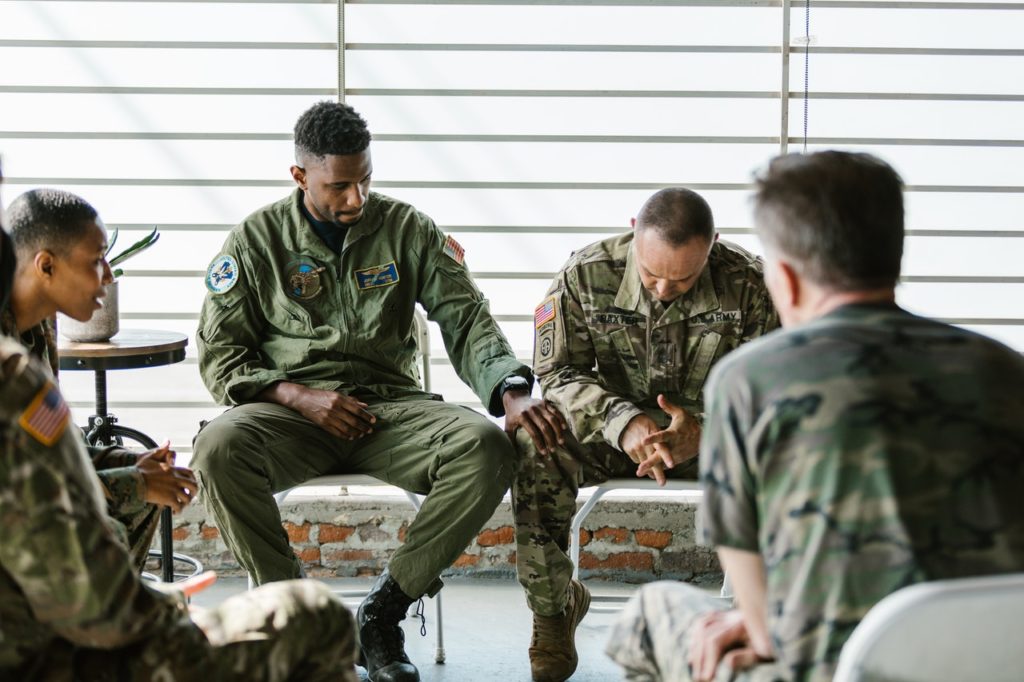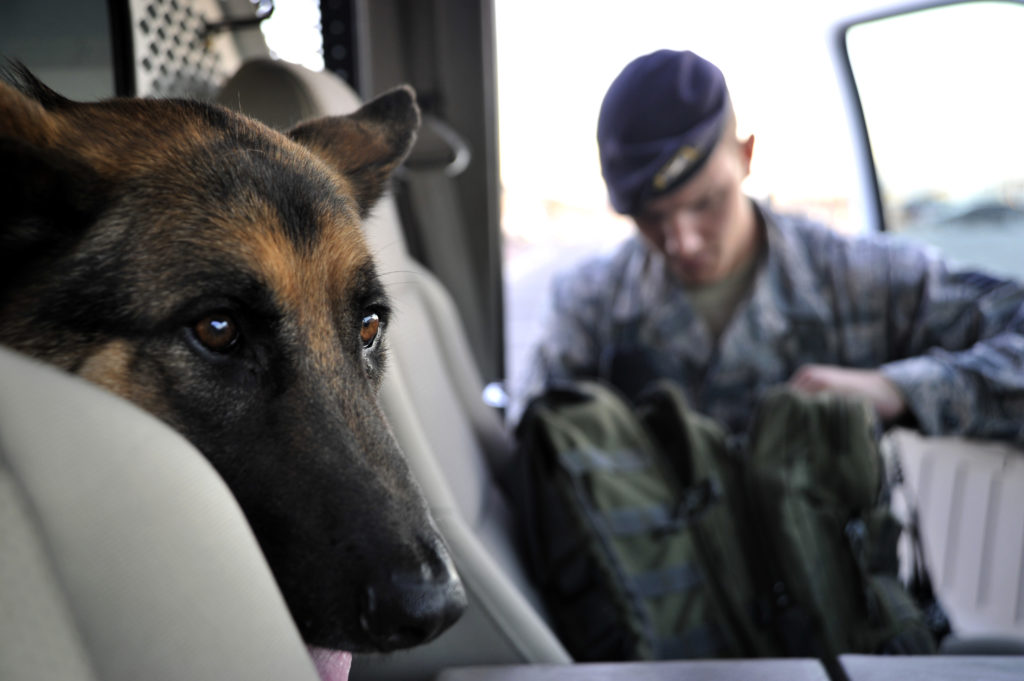Building a trauma-informed culture does not require installing therapist couches throughout office buildings. A trauma-informed culture simply understands the potential impacts of past trauma and is equipped to navigate these workplace impacts.
This article will explore a few more potential factors at play in working with those with past trauma. Finally, we will introduce a few tools to help navigate the impacts of past trauma and build a trauma-informed culture in the workplace.
Flashbulb Etched Memories
Have you ever noticed there are some experiences in your life you remember more vividly than others?
Researchers have found emotion can have a significant impact on memory storage. Intense emotions of fear, shock, or pleasure can all impact the level of detail in a stored memory (Anderson, 2000).
 Give it a try. How clear are your memories of where you were when you first heard of the 9/11 attacks? Are those memories clearer than where you placed the TV remote 30 minutes ago?
Give it a try. How clear are your memories of where you were when you first heard of the 9/11 attacks? Are those memories clearer than where you placed the TV remote 30 minutes ago?
When intense traumatic events combine with repetitive mental conditioning, responses can become almost automatic.
We previously explored Nolan Peterson’s explanation on “Why Soldiers Miss War.” In this article, he also explained how a soldier’s training prepares them for life-or-death situations. Hours of conditioning certainly contribute to an automatic response, but each traumatic experience intensifies this conditioning.
Even split-second traumatic experiences become equivalent to thousands of hours of practice. These experiences act as high-powered amplifiers to the memory etching mechanisms of the brain. They etch the actions that saved their lives permanently into the mind (Anderson, 2000).
When even a portion of a previous near-death experience is encountered, autopilot responses can instantly reengage. Yes, these triggers could come from the proverbial car backfiring, but often it comes for something far less obvious. Sometimes a perceived safety risk or even difficult feedback might be triggering. When triggered, the same autopilot responses that protect on the battlefield or in an abusive environment can bring disruptions to the workplace.
Our Highly Efficient Brains
Our brains have an amazing ability to multitask. They can keep our organs functioning while processing stimuli from our surroundings and at the same time control speech and muscle movement. There is one problem with the ability to multitask. To accomplish these amazing feats, our brain must be as efficient as possible in processing data from our senses. If it detects a pattern that it believes it has seen before it will likely delegate the task to lower-order sections of the brain.
As Peterson explained, brains that have been trauma exposed are so well trained that they can almost function on autopilot. When encountering a pattern that resembles even a portion of past trauma exposure, our brain engages the autopilot. This pattern matching allows for incredibly fast responses with very little energy required.
Between the hormone impacts, the addictiveness of those hormones, vivid memories, and the efficiency goal for our brains, it may seem impossible to overcome the effects of trauma. Yes, it can be difficult but it is possible.
One of the brain’s most fascinating features is its ability to reform connections, or its neuroplasticity. While some incredibly powerful forces were at work when exposed to trauma, all of us can retrain our brains and rewire connections until the day we die.
Tools for Building a Trauma-Informed Culture
 Trauma-informed leaders do not take the place of trained professional counselors and medical doctors in treating PTSD or other trauma-related conditions. However, trauma-informed leaders can play a supportive role in the healing process. When leaders intentionally use tools to build a trauma-informed culture we can encourage others on their path of healing.
Trauma-informed leaders do not take the place of trained professional counselors and medical doctors in treating PTSD or other trauma-related conditions. However, trauma-informed leaders can play a supportive role in the healing process. When leaders intentionally use tools to build a trauma-informed culture we can encourage others on their path of healing.
After three and a half articles exploring the impacts of trauma on our brains and bodies, we are finally ready to discuss the tools of a Trauma-Informed Leader.
If you haven’t had a chance to read the other articles, I would encourage you to review: Trauma-Informed Leadership, Fight or Flight Hormone Response, and Addicted To Trauma.
You may be wondering why it took this much discussion before we discussed any of the tools. From my experience, understanding what might be going on behind behavior is the most powerful tool of a trauma-informed leader. We’ve actually just spent the last three and a half articles learning the first tool in building a trauma-informed culture: Seek Understanding.
1 – Seek Understanding
When you truly seek to understand what is going on behind a response you have a far better chance of navigating that unexpected response. Taking the time to understand triggers, fight or flight responses, addictive chemical releases, and “autopilot” responses gives us a far better chance of leading through the effects of past trauma exposure.
I spent a short time as a licensed counselor for domestic violence (DV) perpetrators. For many in our classes, participation was not optional, it was court-mandated. As with most “mandated” activities, many began this program expressing very little interest in what myself or others had to say.
It was interesting to see the demeanor of these hardened men shift when they had an opportunity to talk through their own traumatic experiences. This openness did not come immediately. It would often take weeks or months of building trust before they were willing to open up.
When we began to understand the horrors these men endured, we began to understand some of the factors behind their behavior. When we took the time as leaders to understand their past, they slowly opened to the process of reshaping their beliefs and changing their behaviors.
I want to stop for a bit and make one thing very clear. Seeking understanding and having compassion for those that have experienced trauma does not mean condoning abusive behavior. Sometimes the most compassionate act we can take as leaders is holding others accountable for their actions. In our DV classes we would often respond with a Denice Frohman quote when participants would try to excuse their behaviors:
“Your wound is probably not your fault, but your healing is your responsibility.”
Seeking understanding simply means looking for the circumstances behind behaviors rather than defining someone’s worth by their behaviors.
As trauma-informed leaders, we need to challenge ourselves to look beyond the surface of unexpected behaviors. Not to overlook or condone inappropriate behavior, but take the time to understand all the factors that might be behind a behavior.
2 – Build a Foundation of Trust
A foundational element in building a trauma-informed culture is establishing trust. Seeking understanding begins the process of building this foundation.
In his Harvard Business Review article “The Neuroscience of Trust”, Paul Zak explains the neuroscience behind cultures built on trust. His research showed a powerful correlation between workplace effectiveness and the level of trust within a team.
While trauma exposure can have a powerful impact on chemical releases and response mechanisms in the brain, a culture of trust can be equally powerful.
A foundation of trust includes the following:
- Character – Ensure your words and actions always align, both inside and outside the office.
- Sincerity – Cut the B.S. and say what you mean and mean what you say.
- Approachability – Be ready to listen and learn from anyone, no matter the position.
- Opportunity – Look for situations that will grow and advance those you lead.
- Vulnerability – Be honest with those you lead and don’t be afraid to let them see you sweat.
- Leading From the Front – Never ask your team to do something you aren’t willing to do yourself.
The leader’s example builds the foundation of trust in a trauma-informed culture. Leaders who model these habits empower those around them to do the same.
3 – Build A Place to Belong
With a foundation of trust firmly in place, the next components of a trauma-informed culture can be built: a place to belong.
One of the challenges for those leaving the military is the supportive community they often leave behind. While exposed to unfathomable trauma, the military often provides a supportive team or family. Looking out for the welfare of those around you becomes second nature for many in the military.
“When I go home people ask me, “Hey Hoot, why do you do it man? What, you some kinda war junkie?” You know what I’ll say? I won’t say a —- word. Why? They won’t understand why we do it. They won’t understand that it’s about the men next to you, and that’s it. That’s all it is.” – Norman Hooten (Black Hawk Down)
In the business world, we say we encourage teamwork, but often our reward mechanisms send the message that individual performance is a top priority.
If we truly want to build a trauma-informed culture we must ensure our actions and our reward systems value building trust and supporting others as highly as individual performance.
“In the military, they give medals to people who are willing to sacrifice themselves so that others may gain. In business we give bonuses to people who are willing to sacrifice others so that we may gain.” – Simon Sinek
When we build cultures where teammates are looking out for each other we can often replace the fight or flight hormones with a healthier alternative: oxytocin. Oxytocin is the hormone that is released when we form a connection or build trust with other humans. It can have similar positive effects to the fight or flight hormones but without the destructive long-term effects.
4 – Convey a Mission Worth Fighting For
Having a clear mission is critical in leading through adversity.
On June 6th, 1944 thousands of Allied troops and aircraft crossed the English channel to attempt to push back the Germans. The commanders of this operation forecasted casualties could approach 75%.
Why would Canada and the United States commit to a battle with these kinds of odds? It was all about a mission. While Germany hadn’t launched attacks on US or Canadian soil, it would eventually become a reality if they did nothing. Stopping this destruction became the simple but powerful mission of the Allied nations. It was a mission so powerful that thousands were willing to risk their lives to accomplish it.
The mission of most organizations may never reach the significance of the Allied mission in World War II, but it is still critical for any culture to thrive. Many with prior military experience have been living in an environment where every minute of their day can be pointed back to their mission. When they are fatigued, attacked, tested, or triggered their focus on their mission can guide their every action. Take a look at the Soldier’s Creed from the US Army:

Organizations may not always have a mission that approaches this level of significance, but we should all be able to find and articulate the why behind what we do. Simon Sinek summarized this concept in the following video and his book is a great resource to help you find your why:
While defining a compelling mission won’t recreate what many with combat experience had in the military, it can help them redirect their passion to a new cause. It is vital for building a trauma-informed culture. A compelling mission can become a new Northstar when encountering the challenges of trauma exposure.
5 – Shovel Snow Whenever Possible
 I currently live and work in the Pacific Northwest. While our climate may not be as brutal as some areas, we do experience a fair amount of winter weather.
I currently live and work in the Pacific Northwest. While our climate may not be as brutal as some areas, we do experience a fair amount of winter weather.
Several years ago I began to see the power of this simple “tool”. After some significant snowfall, our team began the backbreaking task of clearing the snow. It quickly became an all-hands-on-deck activity. From the most senior leader to the entry-level technician, we all grabbed shovels and battled the elements.
As a leader, I made as much headway with this event as with any previous leadership actions. This single act allowed me to utilize most of the previous four trauma-informed tools.
Participating in this challenging task with our team improved the foundation of trust. Working together gave us all a sense of belonging. This snow removal mission was easy to understand and it gave us a common goal to all work towards.
We completed this task in record time and our walkways and equipment were now safely accessible.
Your work environment may never require a snow removal activity, but the all-hands-on-deck, leading from the front approach can be modeled by leaders in many situations.
Whenever possible, close the laptop for a few hours and “shovel some snow.”
6 – Take a Walk
Shoveling snow may be a powerful tool for trauma-informed leaders, but another tool can be equally effective. When encountering an unexpected response, often taking a break and pulling that person aside for a quick walk can be very effective.
A walk can accomplish several things. 
If a person is becoming triggered by a conversation or a physical environment, often a walk can reduce the effects of the trigger.
A walk can also present an opportunity to gain understanding in a less threatening setting. This is not the time to interrogate. A simple “how are you doing?” or “you want to chat?” can often be enough to get a conversation going. The simple act of pulling a person aside for a few minutes often allows people to more effectively process.
The last benefit of taking a walk is the physical impact. Harvard researchers have found that any amount of physical activity can reduce the neurochemical effects of the fight or flight response. In addition to reducing stress hormones, physical activity can provide feelings of relaxation through the release of endorphins.
As simple as it sounds, taking a walk is a powerful tool in a trauma-informed culture.
7 – Use Crucial Conversation Tools
In their book “Crucial Conversations,” the Vital Smarts researchers present a list of tools for navigating what they call crucial conversations. In many ways, their explanation of Crucial Conversations aligns with navigating an unexpected triggered response. The following tools are some of the most relevant tools in building a trauma-informed culture.
Learn To Look
Learning to look is the process of analyzing other people in a conversation and looking for signs of eroding safety. Eroding safety can show up in two ways: violence or silence.
In the workplace violence doesn’t usually start with samurai swords or a bare-knuckle MMA event. Violence is more likely to be seen as controlling, manipulating, or raised voice responses.
Silence is another sign of eroding safety. In many cases, silence may be more dangerous than violence. Silence is often a sign that something is brewing inside the mind.
If not addressed, the building frustration will eventually need some form of release. This release is likely an explosive response that seemingly came from nowhere.
When you sense a conversation is headed towards violence or silence you can use the next crucial conversation tool.
Make It Safe
The foundation of making it safe is ensuring the conversation focuses on finding a mutual purpose. In almost every debate there is likely a mutual purpose that both sides can agree on. Where we often differ is the approach we use in getting to that mutual purpose. Making it safe often involves stepping back from the debate and refocusing on what we both want.
Stories
Inside our minds is an incredibly convincing storyteller. While this may seem harmless, this storyteller may be one of the most dangerous and destructive features of our brains.
The storyteller is what adds intention to the behavior we see in others. Two of the more dangerous stories we can tell are villain or victim stories.
The villain story essentially adds an evil intent to what we are seeing from another person. The danger with this story is that it dehumanizes the other person. It mistakenly permits us to treat the other person however we see fit.
We often tell ourselves the victim story along with the villain story. Not only is the other person an evil mastermind plotting my destruction, but I am a helpless victim, powerless in the situation. The victim story absolves us from taking any responsibility for our actions.
The villain and victim stories are rarely a true reflection of a situation. Often reality lands somewhere in between. Our evil villains are often created by inaccurate assumptions. Our victim status may not be as accurate as our persuasive storyteller would like to think. We can often take more responsibility for our actions than the storyteller thinks is necessary.
Be aware that trauma exposure can often amplify the villain and victim effects. As previously discussed, traumatic events can create an almost automatic response to perceived threats. When the trauma-informed leader can learn to look, make it safe, and master their villain and victim stories they can help those around them do the same.
The Crucial Conversation tools are foundational for creating a trauma-informed culture. While the Crucial Conversation tools are helpful for the leader, these concepts need to become a foundation for everyone on a team. More information about these tools can be found in the following video or on the VitalSmarts website.
The Supportive Factor of a Trauma-Informed Culture
These seven tools can provide you with a few essentials for building a supportive, trauma-informed culture.
As mentioned before, trauma-informed leaders do not take the place of trained professional counselors and medical doctors in treating PTSD or other trauma-related conditions. However, when leaders are able to build trauma-informed cultures they can provide a supportive environment for those on or beginning a healing journey.
Every year thousands of lives are cut short or negatively impacted by the effects of past trauma exposure. Trauma-informed leaders can play a role in reversing these troubling trends.
Sometimes all it takes is one more supportive act to reverse a destructive path. One more supportive act might be the encouragement needed to help someone start or continue down a path of healing.
Previous in the series: Addicted To Trauma?
Sign up for our newsletter if you would like to receive the latest in this series!




